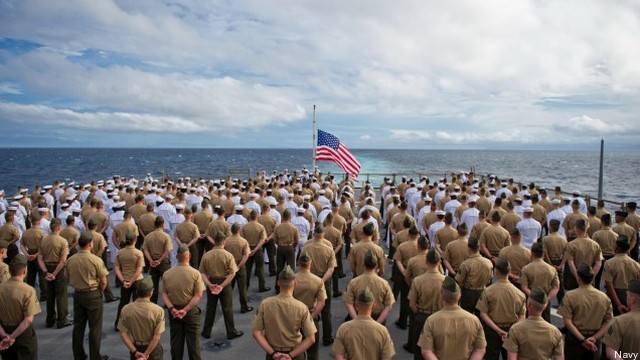Marines ‘Can’t Be Left Out’ Of AirSea Battle
Posted on
 WASHINGTON: As the Pentagon continues to build up its AirSea Battle strategy, the Marine Corps is working hard to make sure they are not left out of that plan.
WASHINGTON: As the Pentagon continues to build up its AirSea Battle strategy, the Marine Corps is working hard to make sure they are not left out of that plan.
The amphibious capabilities the Marines bring “can’t be left out” of the ongoing AirSea battle debate, Lt. Gen Richard Mills, commander of Marine Corps Combat Development Command, said yesterday. The Marines and their Navy counterparts in the amphibious fleet — known as the Gator Navy inside the services — “play at each and every level” of combat operations, Mills said during his speech at the Surface Navy Association’s annual conference in Arlington. Marine Corps assets wage war in the air, on land and at sea, Mills pointed out. That kind ability to fight across all three areas make the Marines invaluable to any AirSea strategy developed by the Pentagon. The AirSea Battle strategy is a new concept that will redefine how sea and air assets fly and fight in the future. Once complete, the plan will likely serve as the blueprint for any potential military operations in the Western Pacific.
Mills’ comments were not in response to any notion within the Corps they had been unfairly sidelined by the department or other services in the AirSea Battle debate, the three-star general told me after his speech. The new Pentagon office created in November to flesh out the AirSea concept has Marines at the table, Mills pointed out. That said, AirSea planners may not be leveraging the the inherent combat capabilities within the Corps as much as they could be, according to Mills. The Marines’ play for an AirSea Battle role comes as the Army is making efforts to get in on the ground floor of the strategy.
Army leaders have been harping recently on the threat of China in the Western Pacific during senior-level talks held late last year. With Army and Marine Corps forces are set to shrink over the coming decade as combat operations wind down in Southwest Asia, both services are both eying roles in the Pacific. Marine Corps leaders have been working with their Army counterparts on amphibious operations, Mills told Breaking Defense. That work has focused on a number of potential combat scenarios where Army and Marine Corps forces could would in tandem. One example is how Army air assault units could help Marine amphibious forces secure a beachhead, Mills explained. This type of cooperation goes back to World War II, when both services cooperated closely on operations in the Pacific and European theaters.
Subscribe to our newsletter
Promotions, new products and sales. Directly to your inbox.
